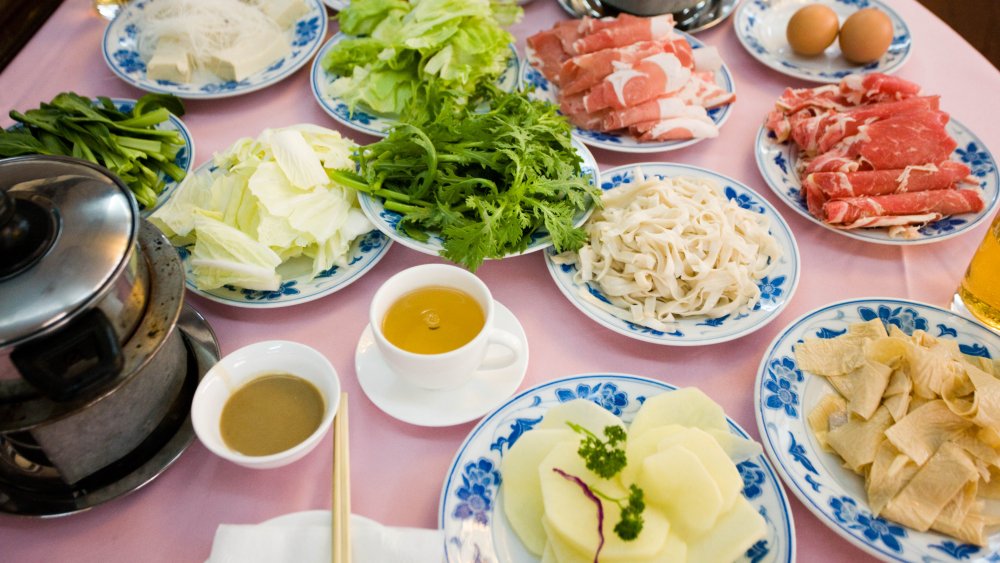These Are The Secrets Of Chinese Brown Sauce
There are five sauces in classical French cuisine: Béchamel, Velouté, Espagnole, Hollandaise, and tomato (via Food 52). You might consider Besciamella, Bagna cauda, Marsala, Bolognese, and Carbonara as their Italian counterparts, too (via Cucina Toscana), but as far as Chinese-American food is concerned, there is just one flavor to rule them all: brown sauce.
Brown sauce is a critical part of just about everything you can order from a Chinese takeout restaurant — whether it's beef and broccoli, General Tso's chicken, or chow mein. Brown sauce is so common it has led Martin Yan, host of Yan Can Cook, to crown it "the Chinese mother sauce" (via The Takeout). And while there are variations on the sauce, whose color can depend on the type of soy sauce you use, Yan says in its most basic form, brown sauce is the same: "There's broth, soy sauce, sugar, a touch of wine, and some sort of thickener." Consider the thickener as a starch binder – corn, tapioca, or potato, that can help the sauce get cozy with the meat or veg that it is meant to enhance. If you're looking for an elevated version of the classic, Ela Vegan offers this upgrade on Chinese brown sauce with the addition of garlic, maple syrup, red pepper flakes, smoked paprika, and rice wine or dry sherry.
Brown sauce isn't as authentic to Chinese cuisine as it may seem
While brown sauce is a key part of Chinese-American cooking, like our old favorite, General Tso's chicken, it may not occupy the same space, or even play the same role, in authentic Chinese cuisine. As The Atlantic points out, "color matters." For instance, in Sichuan cuisine — which is fiery and hot — dishes are tinged with red thanks to the chili oil that gives the food from this part of China the heat that it's known for. Cantonese dishes, on the other hand, are stir-fried in clear sauces — which gives meats and vegetables the chance to shine on their own. The bright green, blanched vegetables are served with what might look like brown sauce but is actually oyster sauce — made from oyster extract, water, cornstarch, and the ingredient we all love to hate, MSG.
While brown sauce has a forever place in Chinese-American cuisine, Food52 suggests there are other Chinese sauces you might want to consider. And while they may not have a place in the chow mein you just ordered from your favorite takeout — we suspect these sauces might just give brown sauce a good run for its money.

